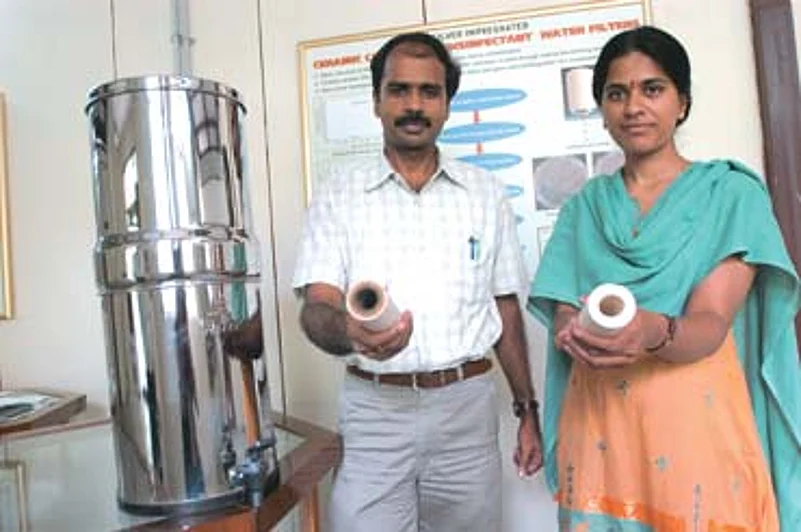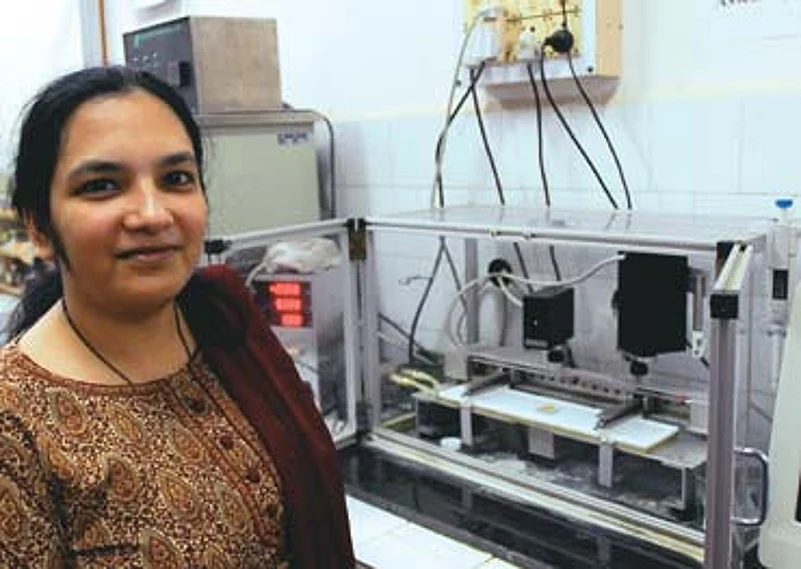- Nanotechnology is the science of building and using materials and devices at the scale of atoms and molecules
- A nanometre is one-billionth of a metre. The average diameter of human hair is around 80,000 nanometres
- At such minute sizes materials exhibit different properties than what they do at the macroscale
- Nanotechnology has made it possible to shrink hard disks, develop stain-resistant clothes and improve cold storage
- Nano research is on in India to develop water filters, to enhance drug delivery and improve the efficiency of pesticides
- But experts have called for a regulatory framework to govern nanotechnology research
***

Another water filter model, developed by the Hyderabad-based International Advanced Research Centre for Powder Metallurgy and New Materials, also leverages the properties of nanomaterials. "The porosity of the usual ceramic candle filters is between 10 and 20 microns but the size of many bacteria is less than 5 microns, enabling many to pass through," explains C. Narasinga Rao, whose team developed the filter. The pores of its candles are embedded with nanoparticles of silver, known for its toxicity to bacteria, in the range of 20 to 30 nanometres. Being extremely small, these target and eliminate the bacteria normal filters fail to detect. "Data from field trials in villages have indicated far lower presence of coliform bacteria, which is an indicator for other bacteria, in our filtered water compared to that using conventional filters," he adds. Talks to launch it commercially are on.
Nanotechnology also holds great potential for better healthcare by paving the way for more efficient drug usage, thereby lowering the cost incurred on medicines. It is being widely researched and, in some cases, even utilised to improve drug delivery using nano-sized carriers and materials. Since many cell membranes have extremely small pores, existing drugs often find it difficult to reach the intended target and end up being absorbed by other body parts, causing undesired side-effects. But, if the drugs are fused with nano-sized carriers, smaller doses targeted precisely at the infected body part may be able to deliver much better results. In some cases, nanotechnology can even help control the release of the drug into the body.
Rinti Banerjee, an associate professor of biomedical engineering at IIT Bombay, and her group are exploring a wide range of possibilities. They are currently working on developing drugs for pneumonia and tuberculosis patients that can be inhaled as sprays instead of the usual tablets or injections. "The nanoparticles in the spray will ensure that the drug reaches deep sites of the body, making it more effective," she says.
Research is also on at IIT Bombay to develop nano-sized particles that may be able to act as a surfactant, a substance that prevents surface tension in the lungs of newborns and prevents them from collapsing. The absence of surfactants is linked to neo-natal respiratory distress syndrome. Likewise, nanotechnology may also offer relief to osteoarthritis patients, who suffer from the breakdown and eventual loss of the cartilage of one or more joints. Attempts are on to develop nano-sized smart materials that, when injected, would support tissue regeneration. Other possible uses being explored at IIT Bombay are related to developing nanotechnology-enabled chemotherapy and eye-drops. "People are just waking up to the possibilities of nanotechnology," says Banerjee.
More so, when properties of materials at the nanoscale often differ radically than at the macroscale. For instance, in 2003, Ajay Sood and Shankar Ghosh at the Indian Institute of Science in Bangalore discovered that when any fluid is passed over a carbon nanotube, the latter acts as a flow sensor and generates a small amount of electricity. This was followed by a similar but even more stunning discovery a year later that even a flow of gases, like oxygen and nitrogen, led to the same effect. A possible futuristic application of carbon nanotubes could be the creation of small hydroelectric power stations using a large assembly of nanotubes or a self-powered pacemaker embedded with a smaller number of these tubes. Likewise, T. Pradeep at IIT Madras discovered last month that carbon nanotubes, when attached to certain metallic nanoparticles, act as semiconductors and emit visible light. "Because of their small size, they penetrate cells and this visible light helps us to detect them, making nanotube-based diagnostics very interesting," he says. As of now, a bundle of carbon, at the macroscale, is not known to emit visible light.

Now you see it... IIT Bombay’s Rinti Banerjee explores nanotechnology’s medical uses
While research in nanomaterials has just caught on, they are already being widely used by many industries in India. These include those related to the production of solar cells, cosmetics, super capacitors, paints, textiles, refrigeration and even preservation (using nano-silver solutions). "Even companies like Larsen & Toubro are now looking to enhance their products with nanotechnology-enabled features such as a protective coating against corrosion or water resistance," says G.K. Moinudeen of cii's nanotech programme.
But, production of nanomaterials at the industrial level is still inadequate, "since size matters a lot in nanotechnology, we often fail to get the required quantity of the right size of nanomaterials in India," says Sejal Shah, research analyst with Yash Nanotech, a Mumbai-based firm that imports nanomaterials from the US and Asian countries like Japan, South Korea and China. The market for nanomaterials continues to grow and, according to Shah, is expected to touch $1 trillion by 2015.
The Department of Biotechnology (dbt) has also taken up some programmes that depend on nanotechnology which include developing pesticides and insecticides, among other projects. "We are looking at improving the efficiency of pesticides by regulating the size of widely used ingredients in the industry such as silica," says R.R. Sinha, an advisor with dbt. Like with drugs, smaller sized particles in pesticides are likely to ensure more effective reach, economising the use of chemicals and reducing their presence in the ecosystem. Nanotechnology is also being keenly pursued by the Department of Information Technology, where projects to develop futuristic silicon-based electronic devices and to explore nanometrology, the science of measurement at the nanoscale level, are presently on.
But nanotechnology, to be fair, is a double-edged sword. There is global concern about the toxicity of nanoparticles because, unlike normal-sized particles, they are capable of reaching deeper spots in the body and travel very far into the environment. International research has proved that nano-sized particles gather in the nasal cavities, lungs and brains of rats, and that carbon nanomaterials, known as buckyballs, cause brain damage in fishes. However, the possible harmful impact is yet to be fully explored and this has prompted experts to call for more research in this domain.
Prasenjit Sen, a professor at the School of Physical Sciences at New Delhi's Jawaharlal Nehru University, and some of his colleagues have been studying the toxicity of nanomaterials of various sizes made out of iron, gold and silver. "Continuous research needs to be pursued to analyse the toxicity of nanomaterials of different sizes and the data used to establish protocols to be adhered to by all using nanotechnology," he says. The government maintains that nano research in the country is still largely at the basic level. But, as it progresses to increasingly touch our lives, safety will become even more important. A project to study the toxicity of nanomaterials is also on at the Lucknow-based Industrial Toxicology Research Centre.
While the jury may be still out on how much of a bane nanotechnology may eventually prove to be, it is nonetheless certain that it has changed and will remarkably change the way we live.


























